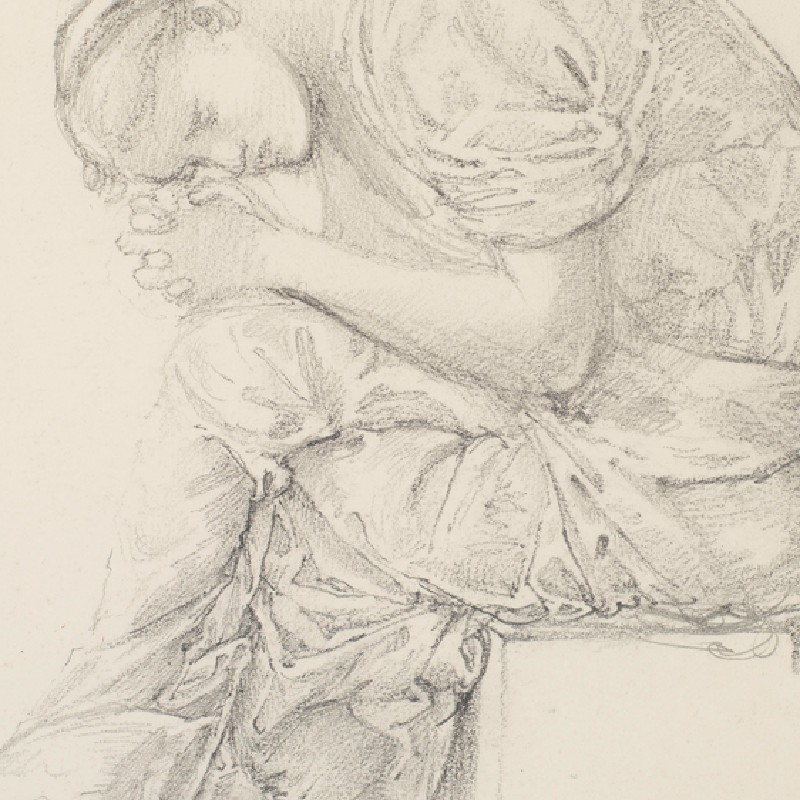Pre-Raphaelite
In 1848, a group of young English artists founded The Pre-Raphaelite Brotherhood (PRB) in reaction to the stale conventions promoted by the Royal Academy. Holding the High Renaissance artist Raphael responsible for creating this academic tradition, they sought instead to emulate the honesty and simplicity of late-medieval and early Renaissance painting. They were heavily influenced by the work of the early 15th century Flemish artist Jan van Eyck, with its rich colouring, vividly realistic lighting and fastidious detail. Their own work was marked by moral seriousness, a bright palette and a scrupulously unidealized observation of nature that outraged critics decried as ‘ugly’. They were defended by the critic John Ruskin, who particularly admired their pioneering habit of painting direct from nature (‘en plain air’). The first wave of Pre-Raphaelites included William Holman Hunt, John Everett Milliais and Dante Gabriel Rossetti. By 1853, their Brotherhood had already disbanded, but the Pre-Raphaelite style would continue in various guises for several decades, above all through the pseudo-medieval subject matter of Edward Burne-Jones and John William Waterhouse. It would also impact furniture design and the decorative arts via William Morris’s development of the Arts and Crafts Movement.
Editorial (1)

Millais' Ophelia and the Case of the Vanishing Vole
Sometimes the story behind a work is just as compelling as the story it tells. This has possibly never been more true than i…
Artists (6)

Ford Madox Brown
Franco-British, 1821–1893
Edward Burne-Jones
British, 1833–1898